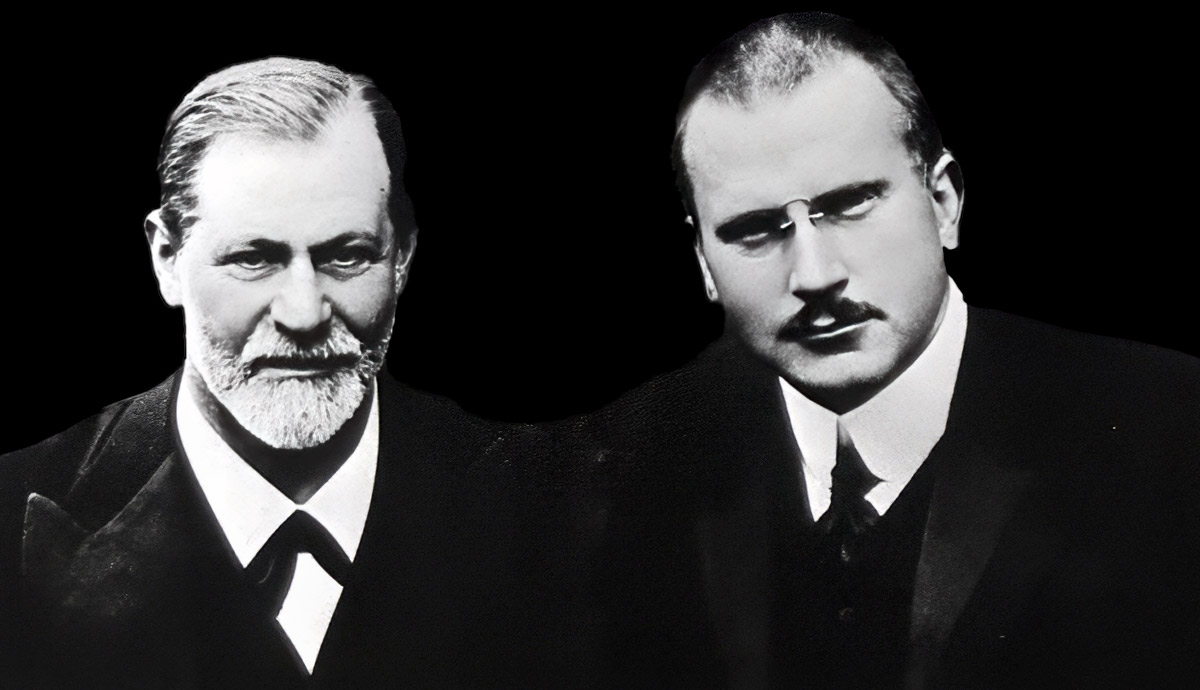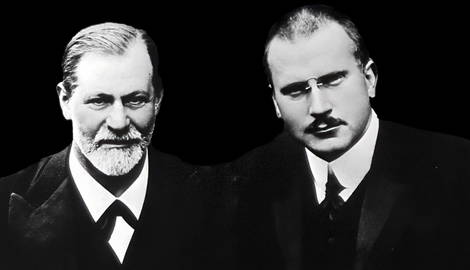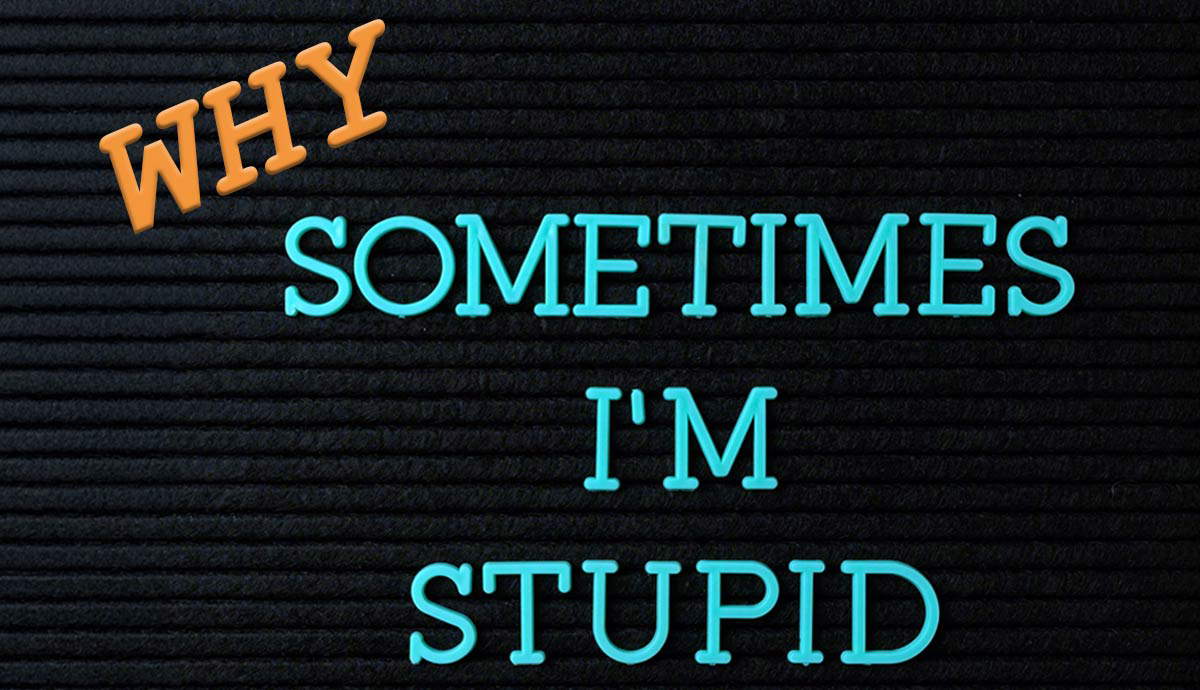
summary
- Carl Jung rejected Sigmund Freud’s focus on sexuality, emphasizing broader forces shaping the unconscious.
- Jung introduced the collective unconscious, a realm of archetypes beyond Freud’s personal unconscious.
- The split between Jung and Freud shaped modern psychology into distinct schools of thought.
Although Carl Jung was greatly influenced by Sigmund Freud, he paved his own way in understanding human psychology. The two collaborated closely in the beginning of Jung’s psychiatric career and shared a mentor-mentee relationship, but gradually tension grew between them as their views became irreconcilable.
Carl Jung’s Complicated Friendship with Sigmund Freud

Perhaps it is a cliché that Freud’s The Interpretation of Dreams was the reason that joined these two famous psychologists together, but that’s exactly how it happened. Jung was still a young intern under psychiatrist Eugen Bleuler when he was asked to write a review of the book.
Almost foreshadowing his future work in dream symbolism, Jung loved the book and grew fascinated by its author. In 1906, Jung decided to contact Freud for the first time. He sent him a copy of his recently published Studies in Word Association, which was a very important contribution to psychoanalysis. As the father of psychoanalysis, Freud was pleased by Jung’s efforts and decided to meet the young psychiatrist in Vienna that same year.

Jung and Freud instantly clicked. They talked for 13 hours straight when they first met, marking the beginning of their fruitful collaboration and unusual friendship. Jung quickly became a leading figure in the psychoanalytic movement, not only publishing numerous works in the field but also becoming the president of the International Psychoanalytical Association in 1910. This was thanks to his strange relationship with Freud, who referred to him as his “adopted eldest son,” “successor,” and even “crown prince” (Freud, 1909).
Jung seems to be the one who initiated this strange dynamic with Freud, the originator of the Oedipus complex. Jung wrote to Freud, “Let me enjoy your friendship as not one between equals but one between father and son” (Jung, 1908). The two thinkers’ collaboration lasted for many years, but as the Oedipus story goes, the son must inevitably kill his father.
Why Carl Jung Rejected Freud’s Obsession with Sexuality

In 1912, Jung wrote to Freud, quoting Nietzsche, that “one repays a teacher badly if one remains only a pupil” (Jung, 1912). Indeed, Jung was not satisfied to merely reproduce or expand Freud’s psychoanalytical theories. He had a completely different approach in mind, one that built upon, and some say completed, the foundations laid down by Freud, but to the extent of rendering them unrecognizable.
The first major clash between the two thinkers was on the centrality of sexuality in psychoanalysis. Freud believed that we were driven by repressed sexual drives that govern our behavior and determine our psychological development. While Jung did not deny its influence, he considered the significance that Freud gave to the libido an exaggeration that was too narrow to encompass the breadth of human experience. Jung believed that there were other equally important forces at play in the unconscious that Freud did not recognize.
Jung’s Collective Unconscious and Freud’s Breaking Point

While Freud was the first to discover that our consciousness is only the tip of the iceberg, Jung was the first to shed light on how vast our unconscious is. Freud believed that our unconscious consisted of repressed and forgotten memories, thoughts, and desires. Jung, however, believed that the unconscious comprised much more than that.
Freud viewed dreams as significant insofar as they can initiate a process of free association. However, Jung reports that eventually he “began to feel that this was a misleading and inadequate use of the rich fantasies that the unconscious produces in sleep” (Jung, 1964). He discovered that dreams, the windows to our unconscious, not only include our repressed and forgotten experiences but also primordial themes and universal symbols that he called archetypes. He distinguished between the personal and the collective unconscious.
Jung’s personal unconscious is reconcilable to some extent with Freud’s theory of the unconscious. However, the latter couldn’t accept the extent to which Jung’s collective unconscious diverged. The two great thinkers separated in 1913 during the International Psychoanalytical Association Congress. Jung had given a lecture there that fully revealed their intellectual schism.
Freud continued to develop psychoanalysis. Meanwhile, Jung took a more spiritual and holistic approach to understanding human behavior, founding his well-known school of analytical psychology.
In a Nutshell
| Topic | Freud | Jung |
|---|---|---|
| Big idea | Behavior driven mainly by sexual drives (libido). | Life energy is broader than sex; sexuality matters but is not singularly central. |
| The unconscious | Personalstore of repressed memories. | There is a Personal and a Collective unconscious (shared archetypes). |
| Dreams | Use dreams to start free association. | Dreams carry symbols and archetypes with meaning. |
| Symbols & myth | Focus on personal history. | Focus on universal symbols across cultures. |
| Therapy goal | Uncover and resolve repressed conflicts. | Individuation: integrate unconscious to become whole. |
| Why they split | Insisted on the centrality of sexuality. | Rejected reductionism; proposed the collective unconscious. |










